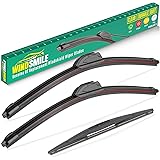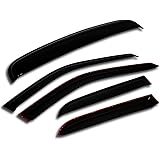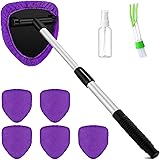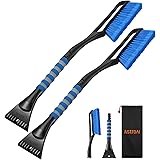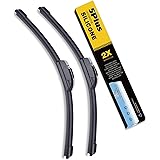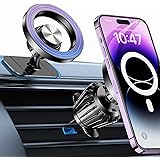Table of Contents
Ever been driving and saw smoke coming from one of your tires? It’s scary and confusing. You might wonder what’s wrong and how to fix it.
A smoking tire means you have a serious problem. It could be brake system issues, mechanical problems, or driving behavior factors. Finding out why is key to fixing it and staying safe.
Key Takeaways
- Identify the potential causes of a smoking tire.
- Understand the importance of troubleshooting the issue.
- Recognize the signs that indicate a need for immediate action.
- Learn how driving behavior can impact tire health.
- Discover the role of brake system issues in causing a smoking tire.
Understanding Tire Smoke: Causes and Concerns
Seeing smoke from your tire can be scary. It’s important to know why it happens for your safety. Tire smoke is not normal and usually means there’s a problem that needs to be fixed fast.
What Tire Smoke Indicates About Your Vehicle
Tire smoke can mean different things, like brake or mechanical issues. It might show that your tire is getting too hot, maybe because of friction or a part that’s stuck. If you ignore this sign, it could cause bigger problems, like a tire blowout or damage to your car.
The Difference Between Normal and Problematic Tire Smoke
Not all tire smoke is the same. Knowing the difference is key. For example, a little smoke after a fast drive might be okay. But if the smoke keeps coming or is a lot, it’s a warning sign. Signs of bad tire smoke include strange noises, vibrations, or a burning smell.
| Characteristics | Normal Tire Smoke | Problematic Tire Smoke |
|---|---|---|
| Duration | Short-lived, stops after normal driving resumes | Persists even after driving conditions normalize |
| Amount | Minimal | Excessive or continuous |
| Accompanying Symptoms | None | Unusual noises, vibrations, burning smell |
Knowing these differences helps you figure out the problem and fix it. This keeps your vehicle safe and running well.
Common Causes of Smoking Tires
Smoking tires can worry drivers a lot. It’s important to find out why it happens. The reasons can be many, like brake problems, mechanical failures, or how we drive.
Brake System Issues
Brake system problems often cause tires to smoke. If brake parts like calipers, pads, or rotors are damaged, they can get too hot. This heat makes the tire smoke.
- Stuck brake calipers can make brake pads rub against the rotor too much, creating heat.
- Brake pads that wear out can cause metal-to-metal contact, leading to a lot of friction and heat.
- Warped brake rotors can also cause vibrations and a lot of heat buildup.
Mechanical Problems
Issues with the vehicle’s wheel or suspension can also make tires smoke. Problems like bearing failures, loose or worn-out parts, and misaligned wheels can cause uneven wear. This uneven wear leads to smoke.
Key mechanical issues include:
- Wheel bearing failures that cause the wheel to wobble and generate excessive heat.
- Misaligned wheels that lead to uneven tire wear.
- Loose or worn-out suspension components that can cause the tire to rub against other parts.
Driving Behavior Factors
How we drive affects our tires a lot. Aggressive driving, like quick acceleration, hard braking, and sharp turns, can stress tires a lot. This stress can cause friction and heat buildup.
To prevent tire smoking from driving, drivers should:
- Avoid hard braking and acceleration.
- Take turns smoothly and avoid sharp corners.
- Check tire pressure often, as underinflated tires can increase friction.
Why Is My Tire Smoking? Identifying the Specific Issue
To find out why a tire is smoking, you need to look closely. You should check for signs of wear, the type of smoke, and any other symptoms. This helps figure out the main problem.
Visual Inspection Techniques
Start by checking the tire visually. Look for wear, damage, or if it’s aligned right. Make sure the tread depth and sidewall condition are good. Also, check if the tire is inflated correctly. Low air pressure can cause the tire to overheat and smoke.
Smoke Color Analysis and What It Means
The color of the smoke can tell you a lot. Gray or black smoke usually means the tire is burning rubber. This could be because the tire is not aligned right or is very worn out. Blue smoke might mean brake fluid is leaking onto the hot brake parts.
| Smoke Color | Possible Cause |
|---|---|
| Gray/Black | Burning rubber due to misalignment or wear |
| Blue | Brake fluid leak onto hot brake components |
Accompanying Sounds and Symptoms
Listen for strange sounds or feel for vibrations. Grinding sounds might mean the brake pads are worn out or a wheel bearing is not working right. Vibrations could point to an unbalanced tire or misaligned wheels.
By looking at the visual signs, smoke color, and any sounds or vibrations, you can find out why the tire is smoking. This helps you know what to do next.
Brake-Related Causes of Tire Smoke
Tire smoke can be a worrying sign, often linked to brake problems. When brakes don’t work right, tires can overheat and smoke. Knowing the brake causes is key to fixing the problem.
Stuck Brake Calipers and Seized Pistons
Stuck brake calipers or seized pistons can cause tire smoke. A stuck caliper keeps the brake pad on the rotor, making it hot. This heat can smoke the tire. Regular brake caliper checks are important to avoid this.
Seized pistons in the caliper can also cause problems. If the piston won’t move, the brake pad stays on the rotor, overheating. Fixing brake caliper and piston issues quickly is crucial to avoid more damage.
Worn Brake Pads and Deteriorated Hardware
Worn brake pads also lead to tire smoke. Worn pads make the caliper work harder, creating more heat. Plus, old brake hardware can cause brake pads to misalign, making things worse. Regular brake pad replacement and hardware checks are essential.
Overheated Brake Rotors and Fluid Issues
Overheated brake rotors can also smoke tires. When rotors get too hot, they heat up the tires. Low brake fluid or dirty fluid can cause overheating. Keeping brake fluid levels right and clean helps prevent overheating.
Understanding these brake causes of tire smoke helps owners fix problems early. This way, they can avoid bigger issues later.
Mechanical Issues Leading to Smoking Tires
Smoking tires can signal many mechanical problems. These include wheel bearing failures and alignment issues. Knowing these issues helps keep your vehicle safe and prevents damage.
Wheel Bearing Failures and Warning Signs
Wheel bearing failures often cause tires to smoke. Worn-out bearings make the wheel wobble, leading to uneven wear and heat. Look out for grinding or growling sounds and vibrations while driving.
Experts say a failing wheel bearing can make the vehicle hard to control. It’s important to check wheel bearings regularly to catch problems early.
Alignment Problems and Their Effects
Alignment issues can also make tires smoke. When a vehicle’s alignment is off, tires wear unevenly and drag, causing heat.
Signs of alignment problems include uneven tire wear and the vehicle pulling to one side. Regular checks can prevent these issues.
- Uneven tire wear
- Vehicle pulling to one side
- Increased fuel consumption
CV Joint and Axle Complications
CV joint and axle problems can also cause tires to smoke. Damaged or worn-out parts cause vibrations and uneven power, leading to heat and smoke.
Listen for clicking or clunking noises during acceleration or deceleration. Regular checks of these parts are crucial to avoid tire and wheel damage.
“Neglecting CV joint and axle maintenance can lead to costly repairs down the line, including potential damage to the tires and wheels.”
Tire-Specific Problems Causing Smoke
Seeing smoke from a tire is scary and means there’s a problem that needs fixing fast. Knowing why tires smoke is key to keeping your car safe and avoiding more damage.
Improper Tire Pressure and Its Consequences
One big reason tires smoke is because of the wrong tire pressure. Tires that are too low or too high can wear unevenly, rub too much, and smoke. Experts say keeping the right pressure is vital for your tires to last and your car to be safe.
“Underinflated tires can overheat and generate smoke due to increased friction and stress on the tire.”
Underinflated tires get too hot because they rub too hard on the road. This heat can damage the tire and even cause it to blow out. Overinflated tires, on the other hand, can slip and wear down the middle, causing smoke from the extra stress.
Tire Rubbing Against Vehicle Components
Tires can also smoke if they rub against other parts of the car. This happens when wheels are off, suspension parts wear out, or tires are put on wrong. Rubbing creates a lot of heat and friction, which can make smoke.
Preventing tire rubbing means making sure wheels are straight, checking suspension parts often, and making sure tires are on right. Doing these things helps avoid tire rubbing and the smoke it causes.
Tread Wear Patterns That Lead to Smoking
Uneven tread wear can also make tires smoke. When some parts of the tire wear more than others, they get hotter and smoke. Things like bad balancing, misaligned wheels, and driving too hard can cause uneven wear.
To stop tread wear smoking, it’s important to regularly check tire tread and fix any uneven wear. This might mean rebalancing tires, fixing wheel alignment, or driving more gently to ease tire stress.
Vehicle-Specific Smoking Tire Issues
Smoking tires can happen to any vehicle. But, the reasons can vary a lot. It’s important to know these differences to fix the problem right.
Passenger Car Tire Smoking Problems
Passenger cars face many reasons for smoking tires. Improper tire pressure can cause uneven wear and friction, leading to smoke. Also, misaligned wheels can rub against other parts, making heat and smoke.
Another big issue is the brake system. Stuck brake calipers or worn brake pads can make too much heat. This heat might look like tire smoke or cause it.
Truck and SUV-Specific Concerns
Trucks and SUVs, used for heavy tasks, have their own smoking tire problems. Overloading these vehicles can stress the tires, causing heat and smoke. Their size and weight make improper tire balancing or misalignment more serious, leading to tire smoking.
| Vehicle Type | Common Causes of Tire Smoke |
|---|---|
| Passenger Cars | Improper tire pressure, misaligned wheels, brake system issues |
| Trucks and SUVs | Overloading, improper tire balancing, misalignment |
| Motorcycles | Aggressive riding, improper tire pressure, brake system issues |
Motorcycle Tire Smoking Causes
Motorcycles can smoke tires due to aggressive riding. This can wear out the tires and build up heat. Improper tire pressure also plays a big role, as it can reduce traction and increase smoking risk.
Brake system problems, like worn brake pads or improper brake adjustment, can also cause smoking. Keeping up with maintenance and riding carefully can help avoid this issue.
Emergency Response: What to Do When You Notice Tire Smoke
If your tire is smoking, staying calm is key. The first thing is to keep yourself and others safe on the road.
Immediate Safety Measures to Take
When you see tire smoke, immediately check your surroundings. If you’re on a busy road, signal to change lanes or pull over.
- Slow down gradually to avoid skidding or losing control.
- Turn on your hazard lights to alert other drivers.
- Look for a safe place to pull over, such as a parking lot or the side of the road.
When to Pull Over Immediately vs. When It Can Wait
Quickly figuring out what to do is important. If you see any of these signs, pull over immediately:
- Smoke is billowing from the tire.
- You hear unusual noises, like grinding or screeching.
- The vehicle is vibrating excessively.
If the smoke is small and there are no other warning signs, you might make it to a service station. But it’s safer to be cautious.
Communicating the Issue to Mechanics
When you see a mechanic, tell them as much as you can. Share:
- The color and amount of smoke observed.
- Any unusual noises or vibrations.
- The driving conditions when the issue occurred.
Telling the mechanic all you know helps them fix the problem faster. This could save you time and money.
Diagnosing the Source of Tire Smoke
Figuring out why your tires smoke is key to fixing the problem. It’s about finding the root cause, which could be brake issues, mechanical problems, or how you drive.
DIY Inspection Methods and Tools
Starting with a DIY check is a smart move. Look over the tire and nearby parts for any damage or wear. Check the brake pads, rotors, and calipers for oddities. Use a thermometer to see if the tire or brakes are too hot.
For a DIY check, you’ll need a flashlight, tire pressure gauge, and a multimeter. These tools help you check electrical systems if needed. Also, look at your car’s repair manual for tips on finding and fixing tire smoke problems.
Using Temperature Readings and Diagnostic Equipment
Temperature checks can tell you a lot about tire smoke. If your brakes are too hot, it might mean there’s a brake problem. Use infrared thermometers or temperature guns to measure without touching.
Tools like brake system analyzers or scan tools can also help. They can spot issues with brakes, wheel bearings, or other parts causing smoke.
When Professional Diagnosis Is Necessary
While DIY checks are good, sometimes you need a pro. If you’re not sure what’s causing the smoke or if it keeps happening, get a mechanic’s help.
A mechanic has the skills, experience, and tools to find and fix complex problems. They can do detailed checks, run tests, and give you a clear plan to fix it.
Step-by-Step Troubleshooting Guide
If your tire starts smoking, finding the cause is key to avoid more damage. A careful approach to troubleshooting can help you find and fix the problem.
Checking the Brake System Components
The brake system often causes smoking tires. Here’s how to check it:
- Look for stuck brake calipers or seized pistons.
- Check brake pads for wear and tear.
- Examine brake rotors for excessive heat or damage.
As emphasized by automotive experts, “Regular brake maintenance is key to preventing smoking tire issues.”
Inspecting Suspension and Wheel Assembly
A bad suspension or wheel assembly can also cause tire smoke. Here’s what to do:
- Inspect wheel bearings for signs of wear or failure.
- Check the alignment of your vehicle’s wheels.
- Look for any damage or corrosion on suspension components.
A well-maintained suspension system ensures smooth vehicle operation and prevents unnecessary tire wear.
Evaluating Tire Condition, Pressure, and Mounting
Tire issues can also cause smoking. Follow these steps:
- Check tire pressure and adjust it according to the manufacturer’s recommendations.
- Inspect tires for uneven wear or damage.
- Verify that tires are properly mounted and balanced.
“Proper tire maintenance is essential for safety and performance. Regular checks can help identify potential issues before they become major problems.”
By following this guide, you can find and fix the cause of your tire smoking. This ensures your vehicle’s safety and performance.
Fixing Smoking Tire Issues
When you see smoke from your tire, it’s important to find out why and fix it. You might need to do some simple fixes yourself or get help from a pro.
DIY Repairs for Common Problems
Many smoking tire problems can be fixed easily at home. You can:
- Adjust or replace worn-out brake pads
- Check and adjust the tire pressure
- Make sure the wheels are aligned right
These tasks usually need basic tools and some mechanical know-how. But, always follow safety rules and repair guides.
Professional Repair Options and Procedures
Some issues are too complex for DIY and need a mechanic. Problems like brake overhauls, wheel bearing changes, or CV joint fixes need special tools and skills.
Here are some professional repair options:
- Brake system check and fix
- Wheel bearing check and swap
- CV joint and axle fix or replace
Experts can also give a detailed look at the problem and suggest the best fix.
Cost Considerations for Different Repairs
The cost to fix a smoking tire varies a lot. It depends on the problem and the repair needed. Costs are influenced by:
- Parts like brake pads, rotors, and wheel bearings
- How hard the repair is and labor costs
- If you do it yourself or get a pro to do it
Knowing these can help you plan your budget for repairs and make smart choices for your car’s care.
Fixing smoking tire issues quickly and right is key to staying safe on the road. It also helps avoid more damage to your car.
Preventing Future Tire Smoking Problems
Regular maintenance and smart driving habits are key to avoiding tire smoke. Knowing why tires smoke and taking steps to prevent it can greatly reduce the risk.
Regular Maintenance Schedule and Checklist
Keeping your tires in good shape is essential. This means checking tire pressure every month, rotating tires every 6,000 to 8,000 miles, and checking brake pads and rotors often.
| Maintenance Task | Frequency | Importance Level |
|---|---|---|
| Tire Pressure Check | Monthly | High |
| Tire Rotation | Every 6,000 to 8,000 miles | High |
| Brake Pad Inspection | Every 10,000 to 15,000 miles | High |
| Brake Rotor Inspection | Every 10,000 to 15,000 miles | High |
Driving Habits That Protect Your Tires and Brakes
Good driving habits are crucial for tire health. Avoiding sudden starts, hard braking, and sharp turns helps. Also, keeping a safe distance from the car in front can prevent brake overheating.
- Avoid sudden acceleration
- Gradually apply brakes
- Take turns smoothly
- Maintain a safe following distance
Seasonal Considerations for Tire Care
Seasonal changes affect tire condition and performance. Before winter, check tire tread depth and before summer, ensure proper tire pressure. In areas with extreme temperatures, consider seasonal tire changes or all-season tires.

By sticking to a maintenance schedule, driving safely, and considering seasonal tire care, you can lower the risk of tire smoke. This approach not only makes driving safer but also improves your vehicle’s performance and lifespan.
Conclusion
Knowing why tires smoke is key to keeping vehicles safe and well-maintained. We’ve looked at many reasons for tire smoke, like brake problems and driving habits. These can all affect how well your tires work.
A tire smoke summary shows how important it is to check your car often. Regular checks can stop many issues before they start. This keeps your car running smoothly and safely.
To stop tire smoking, follow a maintenance plan. Always check your tire pressure and drive safely. Avoid sudden stops and sharp turns to reduce wear on your tires and brakes.
By using tire smoking safety tips, you can lower the chance of tire problems. Watch for smoke and other signs of trouble. Fixing small issues early can prevent bigger, more serious problems.








